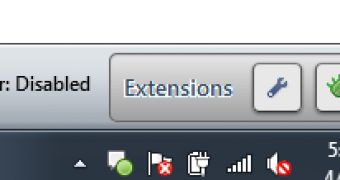Like it or not, Google Chrome proved to be quite a revolution in web browsing, despite its many initial flaws and shortcomings, and most competing browsers borrowing a thing or two from it since then. And the trend continues: Mozilla seems to be taking more and more cues from Google Chrome.
The idea for the Jetpack add-on platform itself is completely 'ripped off' from Chrome and the team is now taking things even further with the proposed "Single UI Element" feature. Basically, the idea is to have extensions, or add-ons, as Mozilla also calls them, behave in an expected way, in this case, by adding a single standard button to the toolbar as a means of interaction.
"One usability enhancement we will be offering to extension authors is a ‘Single UI Element’ API. This API will allow extension authors to expose a UI element that represents their extension in a common, standardized extension bar," Daniel Buchner, Product Manager at Mozilla, wrote on behalf of the Jetpack team.
"A presence in the extension bar will maximize both the user experience and discoverability of extensions. This does not mean we are removing the ability of the developer to modify the interface of Mozilla apps. Developers will continue to have the ability to interact with our application UI in the same ways they do now," he explained.
Regardless of where the developers got their inspiration, the idea is solid. Most Google Chrome extensions can be accessed in a standard way, via a single button, which gets added to the main tool bar. This way, users know where to look when they install a new extension and developers know what the users expect.
Doing the same for Firefox could eliminate one of the most common complaints about the current add-on platform. Add-ons come with a variety of UI elements and installing more than a couple of them quickly turns Firefox into an ugly sight. Aesthetics aside, having extensions 'fight' over position and UI real estate is probably not the best approach. The Single UI Element API will be available for Jetpack developers as the platform matures, but it is now very much in development. You can get an idea of what it will look like from the proof-of-concept image Mozilla has provided.

 14 DAY TRIAL //
14 DAY TRIAL //